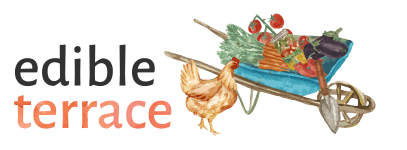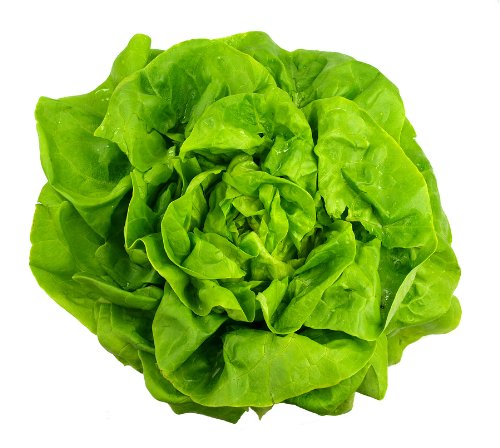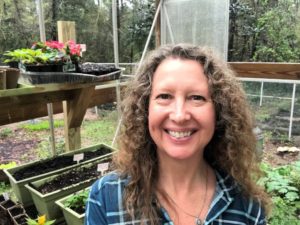Hey! By the way… TheEdibleTerrace is reader-supported. When you buy through links on our site, we may earn an affiliate commission and as an Amazon affiliate, we earn from qualifying purchases. Thanks in advance for your support!
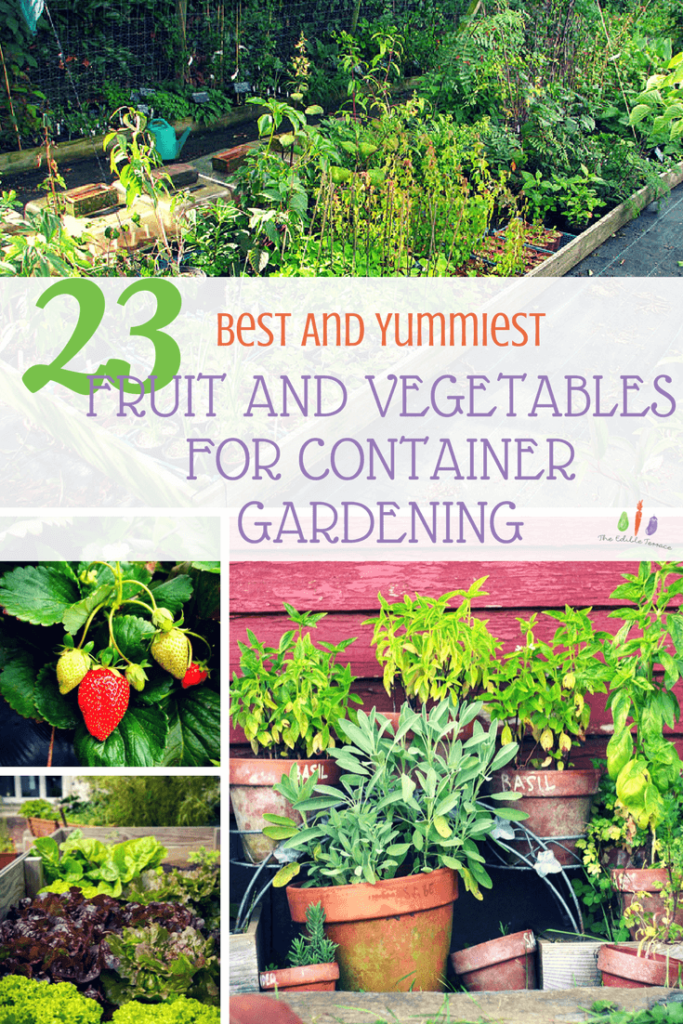
Are you new to container gardening and trying to decide which are the best vegetable plants for container gardening (fruit too!)? Below is my list of 23 different produce that I feel will not only create the best container garden for you but they are also easy to grow. In the interest of space, I highlight a few major points of each fruit or vegetable and leave it up to you to research further the ones that catch your fancy, k? K!
Best Container Garden Vegetables & Fruit
Vegetables You Can Grow in Pots
15,000 Non GMO Heirloom Vegetable Seeds Survival Garden 32 Variety Pack by Open Seed Vault Artichokes: For maximum size, I recommend a 30 quart or larger self-watering container for artichokes. These plants love the sun so place them where they can get the maximum amount. If you live in USDA Zones 8-11, you can grow these as a perennial.
Artichokes: For maximum size, I recommend a 30 quart or larger self-watering container for artichokes. These plants love the sun so place them where they can get the maximum amount. If you live in USDA Zones 8-11, you can grow these as a perennial.
Beans: There are two main types of beans: bush beans and pole beans. They come in all sizes and colors. Pole beans will need a trellis to grow. In fact, this trellis needs to be strong and well-anchored because those beans are heavy!
You could also put a tomato cage on your container too. Pole beans need 8-9 inches of soil to grow. Bush beans do not need as much work. It is best to give them 6 to 7 inches of soil for growth. I am currently growing Calypso Beans. They’re similar to a black bean and SO pretty!
Beets: Beets have a long taproot so I recommend a 10-12 inch deep container. They also need to be diligently watered as they turn bitter if neglected in that area. Another good reason to water diligently is their good health keeps the pests and diseases away.
Carrots: Carrots are one those vegetables that does not play well with others so they should only be grown with other carrots. Fortunately, carrots have been bred in many different sizes and shapes so you have some flexibility in soil depth. Depending which variety you choose, anywhere from 8-12 inches soil depth is recommended.
Cauliflower: Cauliflowers also need to be grown with their own kind. Additionally, cauliflower gets easily stressed which causes it to bolt. This can be prevented with some diligent handling. Additionally, if you want the best taste, white cauliflower needs to be blanched (head protected from the sun while growing).
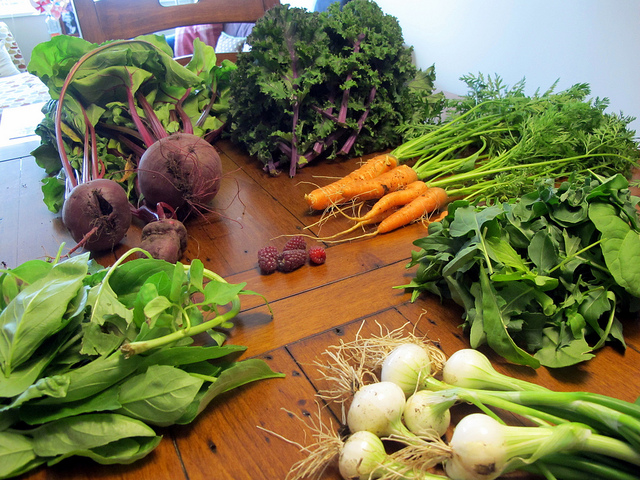
Eggplant: My favorite container gardening author, Edward C Smith, only grows eggplants in containers now because they thrive in that environment. Eggplant seeds do though, need to be started indoors because similar to their pepper cousins the optimum soil temperature for seed germination is 80 to 90 degrees Fahrenheit.
Lettuce and other greens (Kale, Collard Greens, Spinach, Arugula): Salad greens are the first thing I began to grow! And they are what created the gardening bug (so to speak) in me. Salad greens thrive in containers-and what is better than walking right out your door to pick your salad?!?
Your lettuce will thrive as long as you are diligent in watering and watching the temperature they grow in. Keep in mind, if you neglect to water and allow the soil to dry your greens will become bitter.
Onions: Onions are another of those plants that must grow without competition from others. Additionally, where you live will determine the variety of onion you want to grow: short day, intermediate day or long day. For example, I am located in the South and due to this I should grow Short Day onions. Oh, there are also bunching onions that can grow anywhere. Bonnie Plants does a great job of explaining this crazy onion conundrum.

My potato starts
Potatoes: Potatoes are FUN to grow in a container! But, you have to keep an eye on them (nopunintended! Haha!!) too. You can either order seed potatoes online or you can try to use your own potatoes. If you do the latter, it is recommended you buy either organic potatoes or get them from the local farmer’s market.
15,000 Non GMO Heirloom Vegetable Seeds Survival Garden 32 Variety Pack Buttercrunch Lettuce (aka ButterHead Lettuce) 1000+ Seeds. Organic Non-GMO.
Buttercrunch Lettuce (aka ButterHead Lettuce) 1000+ Seeds. Organic Non-GMO. The Sprout House Assorted Organic Sprouting Seeds Mixes Sample, Pack of 12
The Sprout House Assorted Organic Sprouting Seeds Mixes Sample, Pack of 12 Sustainable Seed Survival Heirloom Seed Bag Non-GMO 25 Varieties
Sustainable Seed Survival Heirloom Seed Bag Non-GMO 25 Varieties
Radishes: Radishes only need 6 inches of soil depth. These vegetables grow quickly-from seedling to harvest in 3-4 weeks. Don’t blink!
Summer Squash: I am specifying summer squash here because winter squash is a vine and likes to invade everybody else’s space (not unlike a teenager’s belongings). Summer squash, though it is a bush, does need a large container. Similar to tomatoes, a mature squash plant can take up to a gallon of water a day.
Tomatoes: Tomatoes are one of the most popular plants to grown in a garden. Fortunately, they do well in a container. Tomatoes need a large container too. A full size plant will use 20 quarts of soil and drink a gallon of water a day.
Consider using a self-watering container for your tomato plant. This ensures it always gets enough water.
Turnips: According to my favorite book, turnips grown in a container are small, sweet and tender. The greens are yummy too. Turnips also need at least 8 inches of soil to grow properly.
Fruit You Can Grow in Pots

Our Apple Banana plant is thriving
Apples: Apple trees can be grown in pots. A few things you want to look for when apple tree hunting are to make sure you buy the right variety for your USDA zone and watch out that the one you buy is not root bound.
Bananas: If you live in zones 9b through 11, then your banana plant can be left outside all year. Anywhere else and you need to bring them in when frost threatens. Who cares though?!?
Banana plants are SO cool! In fact, I recommend you bring your banana plant inside often and lay in your lounge chair underneath it. Throw on some steel drum music and sip that tropical drink like the beach bunny you are!
Blueberries: Blueberries need to be planted in higher acid soil. Feed it every few months with organic soil the first year and grow in full sun.
Peaches and nectarines: There are dwarf peach and nectarines that produce full size fruit on a tree that does not grow more than six feet. Peaches do need about 500 hours of temperature between 32F and 45F annually. From what I understand, there are “low chill” varieties available though.
Strawberries: Most of us have seen a strawberry pot-so we already suspect strawberries are container friendly, right? If you decide to use one of these pots for your own strawberries, look up how to set your plants in them though. It takes a little extra manipulation. Take note that slugs love strawberries so don’t let the pot sit directly on the ground.
Everbearing Ozark Beauty Strawberry Plants 20 Bare Root Plants Meyer Lemon Tree – Fruiting Size/Branched Plant – 8″ Pot – Indoors/Out
Meyer Lemon Tree – Fruiting Size/Branched Plant – 8″ Pot – Indoors/Out ‘Ice Cream’ Hardy Live Banana Plant Tasty Fruit Tree. Plant between 3 & 8in tall
‘Ice Cream’ Hardy Live Banana Plant Tasty Fruit Tree. Plant between 3 & 8in tall
Conclusion
There you have it. A list of fruits & vegetables you can grow pots. In reality, there are many more you can grow in a pot, raised garden or vertical garden. I gave you the varieties that seem to have the most success and are the simplest to begin with. If you feel I missed a good one, let me know in the comments, give me your reasons, and I will add it to the list!
Resources
Here are some of the resources I recommend for more vegetable container gardening ideas. They will give you further information into the art of planting vegetables in containers.
- The Vegetable Gardener’s Container Bible by Edward C Smith
- Your seed packets
- Rodale’s Container Gardening 101
- My article on Everything You Need To Know On Planting Vegetables in Pots
